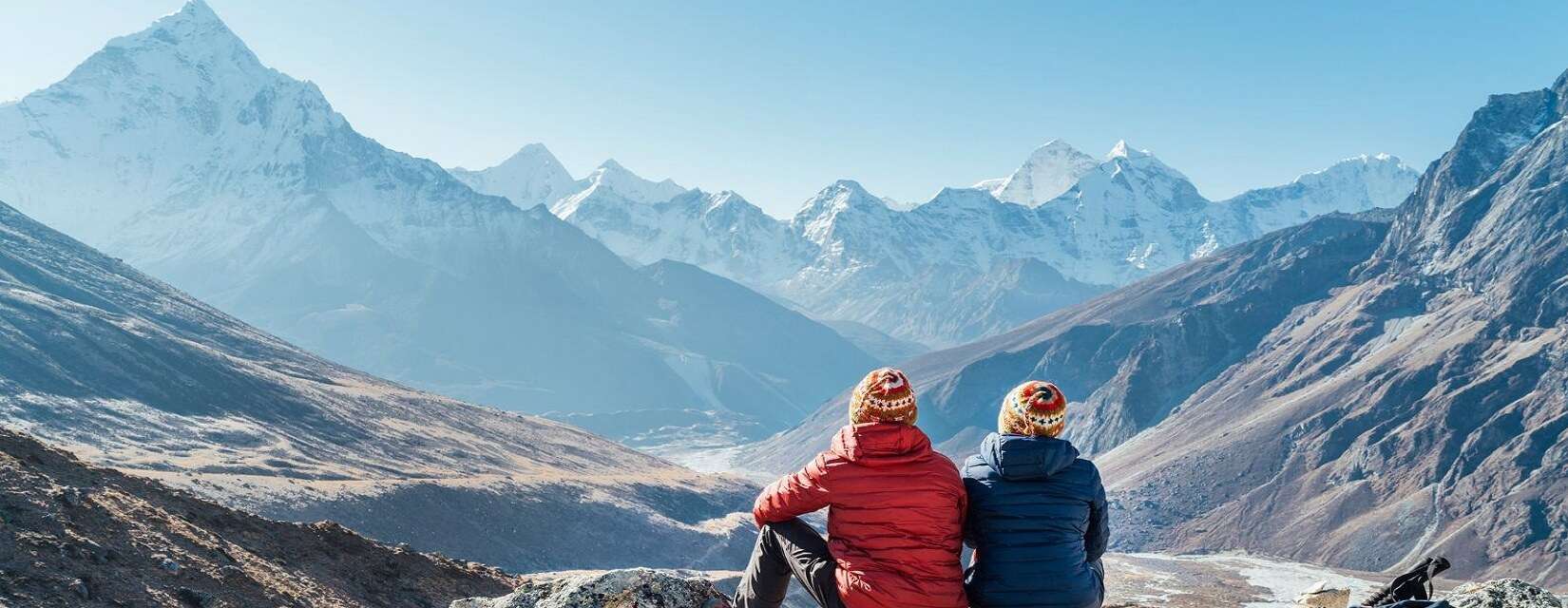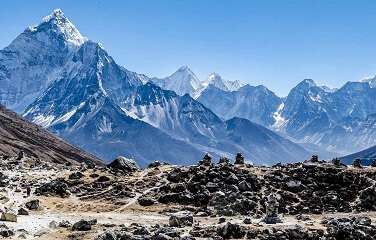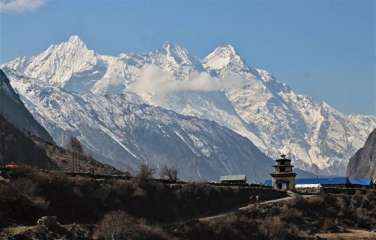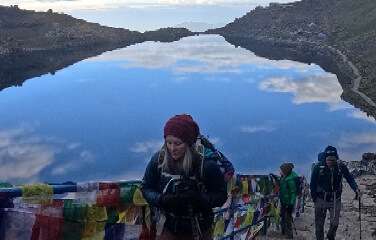The Appeal of Trekking in Nepal

Unparalleled Scenery
Nepal's landscapes are breathtakingly diverse. From lush subtropical forests to alpine meadows and stark high-altitude deserts, the scenery changes dramatically as you ascend. Towering peaks, serene lakes, and cascading waterfalls dot the trails, creating postcard-perfect views at every turn.
Rich Cultural Heritage
Nepal is not just about its mountains; it's also about its people and their cultures. The trekking routes pass through numerous villages inhabited by different ethnic groups, such as the Sherpas, Gurungs, and Tamangs. Each community has its unique traditions, languages, and festivals. Trekking provides a rare opportunity to immerse yourself in these cultures, experiencing their hospitality, tasting local cuisines, and visiting ancient monasteries and temples.
Physical and Mental Challenges

Trekking in Nepal is not just a physical journey; it's also a mental one. The high altitudes, rugged terrains, and unpredictable weather test your endurance and resilience. The sense of accomplishment upon reaching your destination, whether it's a high pass, a base camp, or a remote village, is immensely rewarding.
Popular Trekking Routes
Everest Base Camp Trek

The Everest Base Camp (EBC) trek is perhaps the most famous trekking route in Nepal. Starting from Lukla, the trail takes you through the heart of the Khumbu region, offering spectacular views of Everest, Lhotse, and Ama Dablam. The trek passes through Namche Bazaar, the bustling hub of the region, and Tengboche, home to the largest monastery in Khumbu. Reaching the base camp at 5,364 meters (17,598 feet) is a dream come true for many trekkers.
Highlights
- Stunning Views: Close-up views of Mount Everest, Lhotse, Nuptse, and Ama Dablam.
- Namche Bazaar: The bustling Sherpa town, a hub for trekkers and climbers.
- Tengboche Monastery: A significant spiritual site with panoramic views.
- Sagarmatha National Park: Rich in biodiversity with unique flora and fauna.
- Kala Patthar: A vantage point offering breathtaking sunrise and sunset views over Everest.
Annapurna Base Camp Trek

The Annapurna Base Camp (ABC) trek is a classic Himalayan adventure, renowned for its stunning scenery, diverse landscapes, and rich cultural experiences. Situated in the Annapurna Conservation Area of central Nepal, this trek offers an incredible journey into the heart of the Annapurna range, culminating at the base camp of the world's tenth highest peak, Annapurna I (8,091 meters).
Highlights
- Diverse Landscapes: Terraced fields, rhododendron forests, and alpine meadows.
- Close-up Views: Spectacular views of Annapurna I, Machapuchare (Fishtail), and other peaks.
- Cultural Experience: Interactions with the local Gurung and Magar communities.
- Natural Hot Springs: Relaxing hot springs at Jhinu Danda.
- Machapuchare Base Camp: A stunning viewpoint before reaching Annapurna Base Camp.
Annapurna Circuit

The Annapurna Circuit is another classic trek that offers a diverse range of landscapes and cultures. Starting from the subtropical Marsyangdi Valley, the trail climbs up to the arid Tibetan Plateau. The highlight of the trek is crossing the Thorong La Pass at 5,416 meters (17,769 feet), which offers stunning panoramic views of the Annapurna and Dhaulagiri ranges. The trail also passes through the sacred site of Muktinath and the picturesque village of Manang.
Highlights
- Varied Landscapes: From subtropical forests to high alpine deserts.
- Thorong La Pass: One of the highest trekking passes in the world at 5,416 meters.
- Cultural Diversity: Experience the culture of different ethnic groups, including Gurung, Manangis, and Thakali.
- Hot Springs: Enjoy the natural hot springs at Tatopani.
- Tilicho Lake: A side trip to one of the highest lakes in the world.
Langtang Valley Trek

For those looking for a less crowded but equally rewarding trek, the Langtang Valley is an excellent choice. The trailhead is just a few hours' drive from Kathmandu, making it easily accessible. The trek takes you through the Langtang National Park, home to diverse flora and fauna, including the elusive red panda. The valley itself is dotted with yak pastures, traditional Tamang villages, and ancient monasteries. Kyanjin Gompa, the highest point of the trek, offers stunning views of Langtang Lirung and other peaks.
Highlights
- Langtang National Park: Rich in biodiversity with a chance to see the red panda.
- Kyanjin Gompa: A significant monastery with stunning mountain views.
- Tamang Culture: Experience the culture and hospitality of the Tamang people.
- Scenic Landscapes: Beautiful valley, forests, and panoramic views of Langtang Lirung.
- Cheese Factory: Visit a local cheese factory in Kyanjin Gompa.
Manaslu Circuit

The Manaslu Circuit is a relatively new but increasingly popular trek that offers a remote and authentic experience. The trail circumnavigates Mount Manaslu, the eighth highest peak in the world, and crosses the challenging Larkya La Pass at 5,135 meters (16,847 feet). The trek passes through traditional Gurung and Tibetan villages, lush forests, and glacial valleys. The restricted area status of the region means fewer trekkers and a more pristine environment.
Highlights
- Remote and Less Crowded: A more secluded trek compared to others.
- Larkya La Pass: A challenging and rewarding high pass with incredible views.
- Cultural Immersion: Rich cultural experiences in Tibetan-influenced villages.
- Diverse Scenery: Ranges from lush green lowlands to the high Himalayas.
- Manaslu Views: Close-up views of Manaslu, the eighth highest mountain in the world.
Gokyo Lake Nepal

The Gokyo Lake trek is a spectacular alternative to the more crowded Everest Base Camp trek, offering a unique experience in the Everest region. This trek takes you to the serene and pristine Gokyo Lakes, situated in the Gokyo Valley, and offers stunning views of some of the highest peaks in the world, including Mount Everest, Cho Oyu, and Makalu.
Highlights
- Gokyo Lakes: A series of turquoise glacial lakes.
- Gokyo Ri: A vantage point offering incredible views of Everest, Cho Oyu, and Makalu.
- Ngozumpa Glacier: The largest glacier in Nepal.
- Remote and Less Crowded: Offers a quieter alternative to the main Everest Base Camp trail.
- Cultural Experience: Interaction with the local Sherpa community in the Gokyo region.
Preparing for a Trek in Nepal
Physical Fitness
Trekking in Nepal requires a good level of physical fitness. Preparing your body through regular cardiovascular exercises, strength training, and hiking practice is essential. The ability to walk for several hours a day, often on steep and uneven terrain, is crucial. Altitude acclimatization is another important aspect, as many treks reach elevations above 3,000 meters (9,842 feet).
Gear and Equipment

Having the right gear can make a significant difference in your trekking experience. Key items include a sturdy pair of trekking boots, moisture-wicking clothing, a warm-down jacket, a good-quality sleeping bag, and a reliable backpack. Trekking poles can also be helpful, especially on steep descents. Renting or buying gear in Kathmandu or Pokhara is possible, but investing in good-quality equipment is advisable.
Permits and Regulations
Trekking in Nepal requires various permits, depending on the region. The most common permits are the Trekkers' Information Management System (TIMS) card and the Annapurna Conservation Area Permit (ACAP) or Sagarmatha National Park Permit (for Everest region). Some restricted areas, like the Manaslu and Upper Mustang regions, require special permits and the presence of a registered guide.
Choosing a Trekking Season
The best time to trek in Nepal is during the pre-monsoon (spring) and post-monsoon (autumn) seasons. Spring (March to May) offers blooming rhododendrons and moderate temperatures, while autumn (September to November) provides clear skies and stunning mountain views. Winter treks (December to February) are possible but require more preparation for cold weather, and monsoon treks (June to August) are less popular due to heavy rains and leeches.
Experiencing the Trek

Daily Routine
A typical trekking day in Nepal starts early, around 6 or 7 AM, with breakfast at the teahouse. Trekking usually begins by 8 AM, and the pace is steady, with breaks for tea and snacks. Lunch is taken at a teahouse or a designated spot on the trail, followed by more trekking in the afternoon. Evenings are spent at a teahouse, where you can relax, have dinner, and socialize with fellow trekkers.
Accommodation and Food
Teahouses, small lodges along the trekking routes, provide basic accommodation and meals. Rooms are usually simple, with twin beds and shared bathrooms. The menu typically includes dal bhat (rice and lentil soup), noodles, soups, and various international dishes. In more remote areas, the food choices might be limited, but the warmth and hospitality of the teahouse owners make up for it.
Safety and Health
Safety is paramount when trekking in Nepal. It's important to listen to your body and not rush the acclimatization process. Symptoms of altitude sickness, such as headaches, dizziness, and nausea, should not be ignored. Staying hydrated, eating well, and getting enough rest are crucial. Travel insurance that covers high-altitude trekking and emergency evacuation is highly recommended.
The Rewards of Trekking in Nepal
Personal Growth and Achievement
Trekking in Nepal is a transformative experience. The physical challenges, the solitude of the mountains, and the interactions with different cultures contribute to personal growth. Overcoming the hurdles of the trek, whether it's a steep climb, crossing a high pass, or enduring harsh weather, instills a sense of achievement and resilience.
Connection with Nature
The pristine environment of the Himalayas offers a deep connection with nature. The serene beauty of the mountains, the sound of rivers and waterfalls, and the sight of rare wildlife create a profound sense of peace and wonder. Many trekkers find a spiritual connection in these mountains, experiencing a sense of mindfulness and clarity.
Cultural Exchange

Trekking through Nepal allows for meaningful cultural exchanges. The hospitality of the Nepalese people, their rich traditions, and their way of life provide valuable insights and broaden your perspective. Sharing stories, participating in local festivals, and visiting ancient monasteries enrich the trekking experience and create lasting memories.
Conclusion
Trekking through Nepal is more than just an adventure; it's a journey of self-discovery, cultural immersion, and natural wonder. Whether you're standing at the base of Everest, crossing the Thorong La Pass, or exploring the remote valleys of Langtang, the experience leaves an indelible mark on your soul. The challenges and rewards of trekking in Nepal make it an unforgettable journey to the top of the world.
Simply contact Govinda at 977-9840396708 via phone, WhatsApp, or email at [email protected].





